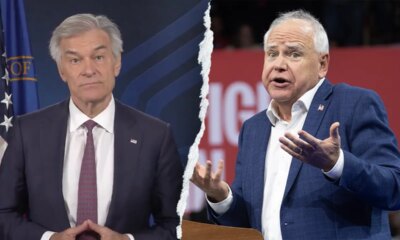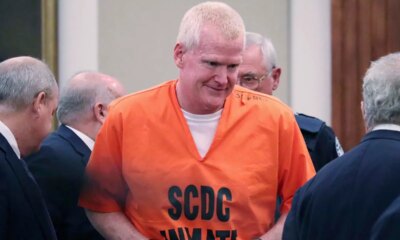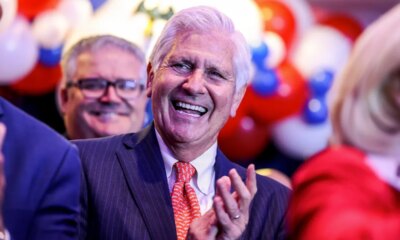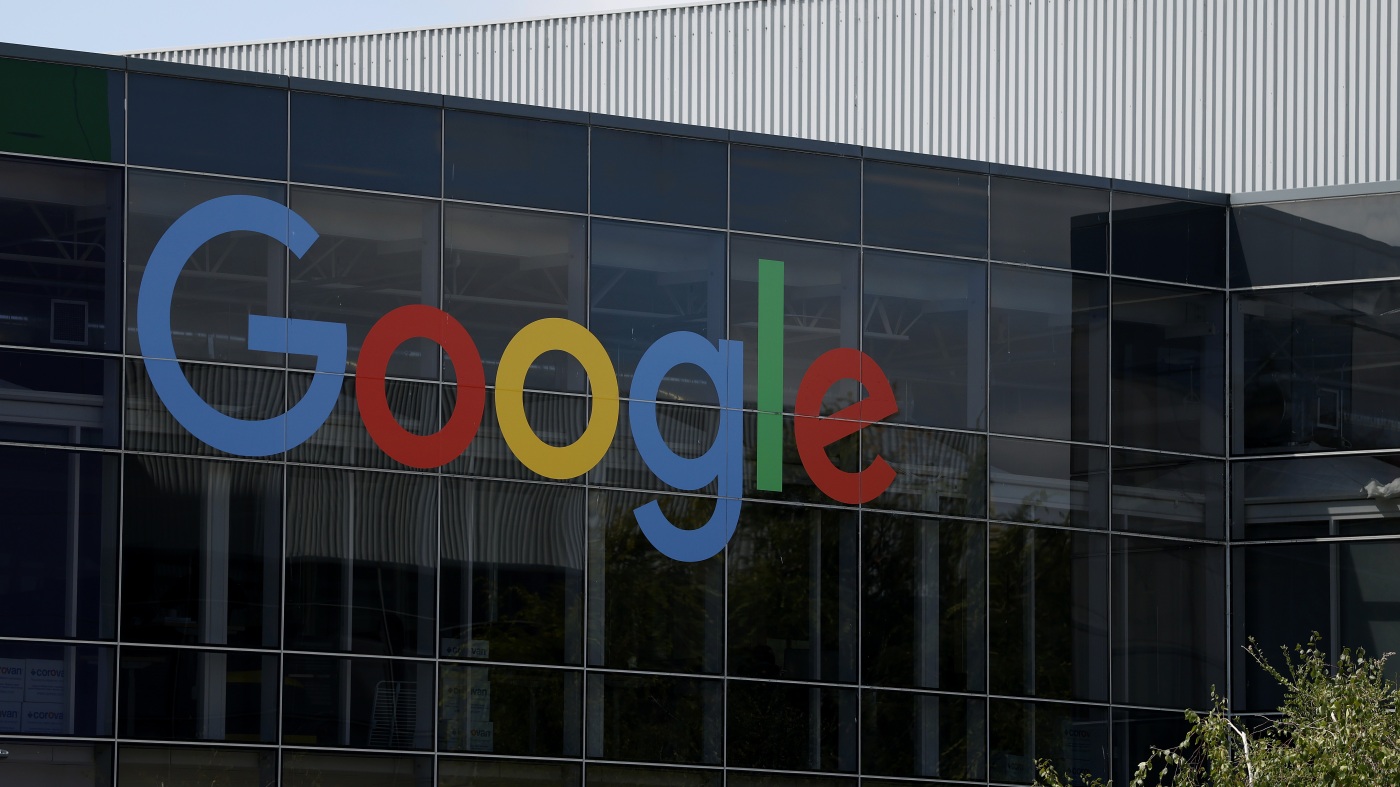Business
Halloween is scaring up big sales for L.A. shops
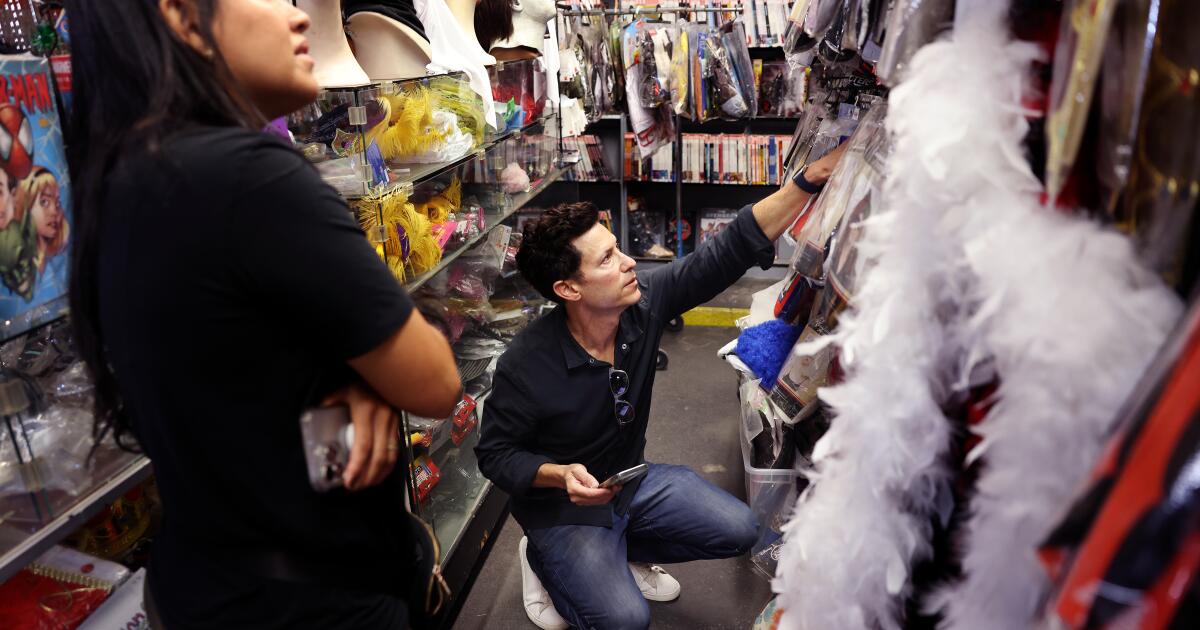
On the corner of a busy intersection in Culver City, an oversize inflatable witch and racks of costumes draw in customers to Robinson Beautilities.
Inside, overflowing bins of accessories sit among packaged costumes and novelty items. Although the shop’s costume rental service is open year-round, business triples in October, co-owner Dan Levin said.
For many Angelenos, Halloween is a celebration of autumn and a chance to embrace beloved whimsical traditions. It’s also an opportunity to spend as the holiday brings with it a retail frenzy — one that hit record levels last year as consumers across the country spent $12.2 billion on candy, costumes, decorations and more.
This year’s Halloween spending is expected to reach $11.6 billion, according to a National Retail Federation survey. Consumers will spend an average of $103 on the holiday, the survey found, totaling around $3.8 billion on costumes, an equal amount on decorations and slightly less on candy.
Costume hunters at his store typically spend around $150, Levin said. Gary Garland, a Pacific Palisades resident shopping for a costume earlier this week, said he would spend that amount on a costume alone, plus more on other Halloween merchandise.
“Halloween is our favorite holiday,” said Garland, who has two children ages 17 and 22. “We’re all in.”
Many customers are willing to splurge on Halloween, Levin said, especially because the holiday is so popular in Los Angeles.
“They definitely go way all out because you have the Hollywood creative community here,” he said. “This is where movies are made and this is where people dress up.”
Packaged costumes in Levin’s shop sell for around $70, while rental costumes, which are higher quality and more theatrical, range from $80 to $200. Countless more costumes are available at chain retailers including Party City and Spirit Halloween, which offers a Harley Quinn costume for $39.99 and a Catwoman costume for $59.99.
“I don’t think money is an issue, as long as it looks really good and they feel good,” Levin said of his customers. He has noticed an increased focus on accessories and costume details in recent years, he said, especially from shoppers particularly invested in the holiday.
At a Spirit Halloween in Culver City two days before Halloween, customers of all ages roamed the aisles and inspected rubber masks, body paint and wigs. Some shelves were already picked clean.
Gisele Manzella of Marina del Rey shops for a Halloween costume at Robinson Beautilities.
(Christina House/Los Angeles Times)
The National Retail Federation survey found that nearly half of Halloween shoppers begin their spending before October because they’re looking forward to the season and want to avoid the stress of last-minute shopping.
“Halloween marks the official transition to the fall season for many Americans, and consumers are eager to get a jump start on purchasing new seasonal decor and other autumnal items,” NRF Vice President of Industry and Consumer Insights Katherine Cullen said in a statement.
Spirit Halloween, which operates about 1,500 seasonal stores around the U.S., opens their doors at the end of the summer and stays open until early November.
“A lot of people come in early to get ideas,” Levin said of his store. “Because we’re here year-round, they know they can get the items they want.”
Seventy-two percent of survey respondents said they plan to celebrate Halloween this year by partaking in modern holiday traditions, including handing out candy, decorating their home, dressing in costume and carving pumpkins.
Those traditions cost money, and as they’ve become more popular, Halloween spending has gone up. According to the NRF, national spending has increased by $4.2 billion over the last decade, jumping from $7.4 billion in 2014 to $11.6 billion this year.
The commercialization of Halloween is nothing new, and modern practices such as trick-or-treating became popular in America in the 1920s and 1930s, according to Smithsonian Magazine.
The holiday’s origins date to the 8th century Celtic festival of Samhain, which was intended to ward off the ghosts of the dead that were said to return the night before the fall harvest on Nov. 1. Festival participants wore costumes made from animal skins and lighted huge fires to burn crops as a sacrifice to the deities.
For Garland in the Pacific Palisades, modern Halloween is worth every dollar, even if his family sometimes goes overboard.
“My wife does some of the shopping,” he said. “I don’t want to know what she spends.”

Business
President Trump Wants to Be Everywhere, All the Time

To understand how Mr. Trump has achieved this omnipresence, The New York Times reviewed the first 329 days of his second term, finding at least one instance each day when he attracted the public’s attention to himself and his actions.
The review encompassed more than 250 media appearances, more than 320 official appearances, and more than 5,000 Truth Social posts or reposts. The analysis shows that while Mr. Trump has lagged his predecessors in his number of official appearances, he has pursued a raft of innovative methods to force himself into the public consciousness on a daily, and sometimes even hourly, basis.
The battery of activity started from the moment he was inaugurated, when he traveled from the Capitol Building to the Capital One Arena to publicly sign a flurry of executive orders.
Since then, he has stayed in the public eye in part by doing things no president has ever done. High-stakes Oval Office meetings, like his negotiations with President Volodymyr Zelensky of Ukraine, are held on-camera and broadcast live on global news networks. His Q.-and-A. sessions with reporters frequently last an hour or more.
He regularly airs his opinions – on social media, in discursive asides at rallies – about idiosyncratic subjects that range widely across the zeitgeist, from Sydney Sweeney’s sexy denim ads to the redesigned logo of the Cracker Barrel restaurant chain to the mysterious fate of the aviator Amelia Earhart, who vanished over the Pacific Ocean in 1937.
And his engagement with the news media has soared well beyond the start of his first administration.
Through Dec. 14, Mr. Trump took reporters’ questions on 449 occasions, compared with 223 during the same period of his first term. On average, Mr. Trump has interacted with journalists roughly twice a day, doubling his rate from 2017, according to Martha Joynt Kumar, a Towson University political scientist who tracks presidential press interactions. Mr. Trump limits which news outlets can ask questions at small events, but in sheer volume, he is the most media-accessible modern president, and far outpaces his predecessor, Joseph R. Biden Jr.
“Reporters will be in my office asking me for the president’s reaction to a breaking news story,” Karoline Leavitt, the White House press secretary, said in an interview. “And I’ll just say to them, ‘I don’t know, why don’t you ask him yourself in 30 minutes?’”
President Trump’s media appearances have soared this year, more than doubling both the Biden administration’s and those of his own first term.
Finding the Cameras
Many of his public moments go viral online, like his diatribe about restoring the name of the Washington Redskins, or the A.I.-generated video meme he posted of himself dribbling a soccer ball with Cristiano Ronaldo in the Oval Office. They take on a life of their own, rippling across social media and dissected and amplified by influencers and mass media platforms alike.
The result is a president whose not-so-inner monologue is injected into our daily lives in myriad ways, when we are watching TV on the weekends or idly scrolling the web – a Greek chorus for our national narrative.
“He’s the most ubiquitous president ever,” said Douglas Brinkley, the presidential historian.
The media strategy aligns with his political strategy.
Dating back to his years as an outspoken real estate developer and reality TV star, Mr. Trump has relished being unavoidable for comment. But at age 79, he has been outdoing his younger self. And there is a logic to his logorrhea.
Mr. Trump’s allies often speak of the political benefits of flooding the zone: pursuing so many policies, ideas, and dramatic restructurings of the normal ways of governance as to overwhelm the system. “All pedal, no brake,” as Stephen K. Bannon, Mr. Trump’s one-time adviser, has called it.
“We joke internally that he is our ultimate director of communications,” Ms. Leavitt said. “He has incredible media instincts, and he is the final decision maker on all policy, and he has been in a ‘flood the zone,’ ‘do as much as possible’ mindset since he walked into the Oval Office on Jan. 20.”
All presidents benefit from the awesome news-making powers of the office, with its agenda-setting influence over a dedicated global press corps. But Mr. Trump has outstripped his predecessors in whipsawing the public’s attention onto matters small and large – and limiting the level of scrutiny that any one shocking remark or policy proposal receives.
“People can really only focus on a handful of things a day,” said Bill Burton, a deputy White House press secretary under former President Barack Obama. “This attention flood is working for Trump because he is able to do an extraordinary amount of executive actions and very little of it can get attention.”
Or as Mr. Brinkley put it: “He plays to win the day, every day, around the clock.”
His commentary takes on a life of its own.
One of Mr. Trump’s political assets is his instinct for virality.
With a natural feel for the web, Mr. Trump has a knack for amplifying wacky memes and pop culture curios that can drive days of online discourse. Sometimes, coverage of his offhand remarks or late-night social media posts can crowd out the more significant, norm-shattering changes he is making to American governance.
Late one Friday night in May, the president posted an obviously A.I.-generated image of himself as the pope. It struck a nerve.
Mr. Trump had already courted controversy days earlier, after the death of Pope Francis on April 21.
“I’d like to be pope,” the president told reporters who asked about who should become the next pontiff. “That would be my number one choice.”
The comment disturbed some Catholics, who said the notion was crude and insensitive. That reaction seemed only to prompt Mr. Trump to double down, posting the A.I.-generated image to his Truth Social account days later. By the weekend it had become a cultural phenomenon, mocked on “Saturday Night Live” and called out by experts as an example of misleading A.I. content.
After Mr. Trump posts the A.I. image …
May 2
Trump posts A.I. image of himself as Pope
There is nothing clever or funny about this image, Mr. President. We just buried our beloved Pope Francis and the cardinals are about to enter a solemn conclave to elect a new successor of St. Peter. Do not mock us.
May 3
NYS Catholic Conference says “do not mock us”
May 3
“Saturday Night Live” covers fake image
May 3 Vatican asked about image, declines to comment
May 4
Cardinal Joseph Tobin of New Jersey criticizes image as “not good”
May 4
JD Vance defends Trump on X, calling it a joke … some Catholics were outraged, prompting a news cycle focused on the controversy …
5
Says “the Catholics loved it”
… before Mr. Trump suggested he had nothing to do with it.
Mr. Trump, who is not Catholic, had plenty of defenders, too. They said his commentary and the A.I. image were simply jokes, part of the president’s unique comedic style.
“As a general rule, I’m fine with people telling jokes and not fine with people starting stupid wars that kill thousands of my countrymen,” Vice President JD Vance, who is Catholic, wrote on X.
In his quest for attention, the president is often aided by a cottage industry of right-wing influencers and activists who are primed to syndicate, reinforce and defend whatever content he pushes out each day. For this conservative media ecosystem, Mr. Trump’s messaging and commentary are the raw fuel that drives clicks, shares and views.
On June 7, the president’s visit to a raucous U.F.C. fight – complete with a “Trump dance” entrance into the arena – generated an immediate spike in online interest, including about 50,000 posts on X. Five days later, when he promoted a “Trump gold card” visa, his announcement led to roughly 30,000 posts on X.
A barrage that distracts from bad news.
One pattern in Mr. Trump’s behavior: When his administration is faced with bad news, he launches a fusillade of distraction.
This can take the form of outlandish, out-of-left-field claims about political opponents. Or he might weigh in on a pop culture subject far afield from Washington politics – from the ratings of late-night hosts like Seth Meyers to the physical appearance of a megastar like Taylor Swift.
The events of July 2025 offer a case in point.
As the Jeffrey Epstein files returned to the news – along with speculation that Mr. Trump might appear in them – the president embarked on a breathtaking series of tangents. Mr. Trump claimed without evidence that former President Bill Clinton had bankrolled an effort by senior intelligence officials to frame him for a crime, mused about stripping the actress Rosie O’Donnell of her U.S. citizenship, and accused the singer Beyoncé of accepting millions of dollars to endorse his erstwhile rival, former Vice President Kamala Harris.
July 8
F.B.I. publishes memo about Epstein files On July 8, the F.B.I. said it would not declassify more Epstein files.
10
Claimed intelligence officials tried to frame him
10
Pushed to defund NPR and PBS
10 Directed ICE to arrest protesters
12
Threatened Rosie O’Donnell’s citizenship
15
Claimed Adam Schiff engaged in mortgage fraud Over the following days, Mr. Trump seemed to lash out in every direction.
On July 18, the Justice Department filed a request to unseal grand jury testimony about Mr. Epstein, again raising questions about Mr. Trump’s involvement. The president promptly lobbed insults at late-night talk show hosts, dismissed the Epstein affair as “fake news” and shared fresh claims about a supposed Obama administration plot to undermine him after the 2016 election.
July 18
Request filed to unseal grand jury testimony
On July 18, the Department of Justice filed a request — later denied — to unseal grand jury testimony.
20
Criticized Washington Commanders name
21
Called the “Russia hoax” the “crime of the century”
22
Called Epstein controversy “fake news”
22
Criticized Kimmel and Fallon
24 Criticized Federal Reserve chairman
Over the following days, Mr. Trump bounced from topic to topic.
On July 25, The Wall Street Journal published a major scoop: The paper had unearthed a risqué birthday letter that Mr. Trump had apparently written to Mr. Epstein in 2003. Mr. Trump responded with his attack on Beyoncé and revived his threat to revoke the broadcast licenses of TV networks. Then he announced the imminent construction of an enormous gilded ballroom at the White House, at a cost of $200 million. (He has since revised the cost upward to $400 million.)
Asked if there was a deliberate strategy to distract from negative news, Ms. Leavitt noted that every administration seeks to minimize unhelpful headlines.
“Yes, there have been times in which we’ve tried to do that, but also often it just happens naturally, because the president is willing to weigh in on so many subjects,” she said. “Sometimes it’s really not deliberate. It’s just him speaking his mind on whatever news cycle or news story is brought to him in that moment.”
He has added tricks to his arsenal.
Mr. Trump’s devotion to Truth Social mirrors the hair-trigger Twitter habit of his first term; on one recent December evening, he posted 158 times between 9 p.m. and midnight. And he has continued to appear on Fox News with certain preferred hosts.
But this year, he has added to his media arsenal by appearing in many more public spaces that fall outside of a president’s typical itinerary.
Mr. Trump has stopped by a Washington Commanders N.F.L. game, popped up in the New York Yankees locker room, attended the Ryder Cup golf tournament and the men’s tennis final at the U.S. Open, sat ringside at numerous U.F.C. fights, and traveled to the Daytona 500. He is the first sitting president to attend a Super Bowl. When FIFA staged the Club World Cup final in New Jersey, Mr. Trump not only attended, but joined the winning team onstage for the trophy ceremony.
The net effect is a sense of inescapability, that no corner of American life remains Trump-free – which itself amounts to a potent expression of presidential authority and command. “His power, in part,” said Mr. Burton, the former Obama aide, “comes from the attention that people give him, or that he forces on them.”
Can it ever be too much?
In the fall of 2009, President Barack Obama appeared on David Letterman’s talk show, gave interviews to CNBC and Men’s Health magazine, and made the rounds of all five major network Sunday shows. Washington was abuzz about whether he was overexposed.
That debate sounds quaint today. But the question of whether a president can be too visible remains open.
“The public is being desensitized” to Mr. Trump’s omnipresence, argued Mr. Brinkley, the historian. “It starts becoming blather. The enemy for Trump isn’t Democrats; it’s the public being bored with the show.”
Ms. Leavitt said that if there was a risk to his ubiquity, “President Trump would not be president right now.” She added: “He is a businessman who speaks his mind and tells it like it is, and sometimes people don’t like that. But obviously the vast majority of our country does, or else he wouldn’t be in this office.”
During Mr. Trump’s first term, the public eventually tired of his frenzied pace. And in some ways, Mr. Trump appears to be slowing down physically as he approaches his 80th birthday in June (which he will celebrate in part by staging a nationally broadcast U.F.C. fight on the White House lawn). He has appeared to doze at some Oval Office meetings, and he is holding fewer formal public events than he did at this point in 2017.
Still, Mr. Trump and his team have embraced the everywhere-all-at-once nature of modern media. Average Americans, busy with work and family, do not tune in for daytime news conferences or Cabinet meetings. And 6:30 p.m. newscasts and local newspapers are no longer the primary vessels by which Americans learn about their commander-in-chief.
Instead, politics now suffuses our lives as a kind of ambient noise – via TikTok videos, social media posts, YouTube talk shows and family Facebook messages – never fully separate from our leisure pursuits. “Right now the game is attention, in terms of what’s culturally breaking through,” Mr. Burton said. “The fact that so much message exists is the point.”
Mr. Trump has both propelled this merging of culture and politics, and continues to strategically exploit it. In December, he became the first president to personally host the Kennedy Center Honors, comparing himself onstage to Johnny Carson and musing that he would do a better job than Jimmy Kimmel.
“This is the greatest evening in the history of the Kennedy Center,” Mr. Trump told the crowd. “Not even a contest. There has never been anything like it.”
His performance will air in prime time on CBS on Dec. 23.
Photo and video sources: Graham Dickie/The New York Times; Doug Mills/The New York Times; Roll Call Factba.se; PBS; Mauro Pimentel/Agence France-Presse — Getty Images; Kenny Holston/The New York Times; The New York Times; Annabelle Gordon/Reuters; Eric Lee/The New York Times; Fox; Cheriss May for The New York Times; Wilfredo Lee/Associated Press; Margo Martin, via Storyful; Mark Abramson for The New York Times; Global News; Al Drago/Getty Images; Fox News; Dave Sanders for The New York Times; Pete Marovich for The New York Times; Ted Shaffrey/Associated Press … Show all
Business
Why is Trump’s media company getting involved with nuclear power?

President Trump’s media company is merging with a nuclear fusion energy firm in a $6-billion deal aimed at generating more power amid growing demand from power-hungry artificial intelligence data centers.
The merger between Trump Media & Technology and TAE Technologies could lead to one of the world’s first publicly traded fusion energy companies, the two companies said Thursday.
What is TAE Technologies?
TAE Technologies is a private company based in Foothill Ranch, Calif. It has been raising funds for commercial-scale nuclear fusion, a method of energy production that supporters say could revolutionize access to electricity. Founded in 1998, the company has built and operated five fusion reactors and raised more than $1.3 billion.
Fusion uses the same process that powers the sun to produce potentially limitless energy. Experts say it hasn’t been achieved on a large scale because the process is volatile and expensive. TAE is trying to develop the technology needed to reduce the size, cost and complexity of fusion reactors.
“Our talented team, through its commitment and dedication to science, is poised to solve the immense global challenge of energy scarcity,” TAE Chief Executive Michl Binderbauer said in a statement. “Recent breakthroughs have prepared us to… commercialize our fusion technology.”
What is the political history of Truth Social?
Truth Social was launched in 2022 as Trump created an alternative to mainstream social media, which was increasingly restricting and blocking his posts and profiles, as well as those of his allies and supporters. It began trading on the Nasdaq stock exchange through a 2024 merger with a special purpose acquisition company.
While most social media platforms have lifted restrictions on Trump’s posts, he still primarily posts on his own platform.
Though Trump and companies he is associated with control more than a 40% stake in the company, much of his investment is managed by others to avoid a conflict of interest during his term as president. Some analysts suggest his indirect association with a new company in a highly regulated industry could also lead to issues.
TAE will need significant investment and regulation to advance, which makes Trump’s ties a major conflict, Richard Painter, a former White House ethics lawyer in the George W. Bush administration, told the Associated Press.
“He’s jumping into this industry just like he jumped into cryptocurrency a couple of years ago,” Painter said. “Just as the United States government is gonna get all involved in it. And it’s so obvious that there’s a huge conflict of interest.”
Trump Media shares, which had fallen more than 80% from their 2024 peak, have skyrocketed around 50% since the deal was announced.
The company now has a market value of more than $4.5 billion.
Why are the companies merging?
The parent company of Trump’s social media site, Truth Social, Trump Media & Technology, previously had little to do with energy production. The company agreed to merge with Alphabet-backed TAE Technologies, with the aim of paving the way for easier access to abundant electricity.
The merger aims to help both companies diversify and raise more money.
It is an attempt to combine Trump Media’s “significant access to capital” with TAE’s “leading fusion technology,” the companies said in a release.
They plan to begin construction in 2026 on the first-ever utility-scale fusion power plant.
“Fusion power plants are expected to provide economic, abundant and dependable electricity that would help America win the AI revolution,” the release said.
The boom in popularity of AI chatbots such as ChatGPT has created a seemingly insatiable new demand for power.
The Georgia Institute of Technology says modern AI data centers use as much electricity as a small city. As AI models grow, they demand even more power.
What are the terms of the deal?
The all-stock transaction announced this week values each share of TAE Technologies at $53.89, although it is a private company. Trump Media has agreed to provide $200 million in cash to TAE upon closing, expected in mid-2026.
When the merger is complete, TAE and Trump Media shareholders will each own about 50% of the combined company.
Trump Media will be the holding company for TAE, TAE Power Solutions and TAE Life Sciences.
Business
U.S. Space Force awards $1.6 billion in contracts to South Bay satellite builders

The U.S. Space Force announced Friday it has awarded satellite contracts with a combined value of about $1.6 billion to Rocket Lab in Long Beach and to the Redondo Beach Space Park campus of Northrop Grumman.
The contracts by the Space Development Agency will fund the construction by each company of 18 satellites for a network in development that will provide warning of advanced threats such as hypersonic missiles.
Northrop Grumman has been awarded contracts for prior phases of the Proliferated Warfighter Space Architecture, a planned network of missile defense and communications satellites in low Earth orbit.
The contract announced Friday is valued at $764 million, and the company is now set to deliver a total of 150 satellites for the network.
The $805-million contract awarded to Rocket Lab is its largest to date. It had previously been awarded a $515 million contract to deliver 18 communications satellites for the network.
Founded in 2006 in New Zealand, the company builds satellites and provides small-satellite launch services for commercial and government customers with its Electron rocket. It moved to Long Beach in 2020 from Huntington Beach and is developing a larger rocket.
“This is more than just a contract. It’s a resounding affirmation of our evolution from simply a trusted launch provider to a leading vertically integrated space prime contractor,” said Rocket Labs founder and chief executive Peter Beck in online remarks.
The company said it could eventually earn up to $1 billion due to the contract by supplying components to other builders of the satellite network.
Also awarded contracts announced Friday were a Lockheed Martin group in Sunnyvalle, Calif., and L3Harris Technologies of Fort Wayne, Ind. Those contracts for 36 satellites were valued at nearly $2 billion.
Gurpartap “GP” Sandhoo, acting director of the Space Development Agency, said the contracts awarded “will achieve near-continuous global coverage for missile warning and tracking” in addition to other capabilities.
Northrop Grumman said the missiles are being built to respond to the rise of hypersonic missiles, which maneuver in flight and require infrared tracking and speedy data transmission to protect U.S. troops.
Beck said that the contracts reflects Rocket Labs growth into an “industry disruptor” and growing space prime contractor.
-

 Iowa6 days ago
Iowa6 days agoAddy Brown motivated to step up in Audi Crooks’ absence vs. UNI
-

 Iowa1 week ago
Iowa1 week agoHow much snow did Iowa get? See Iowa’s latest snowfall totals
-

 Maine5 days ago
Maine5 days agoElementary-aged student killed in school bus crash in southern Maine
-

 Maryland6 days ago
Maryland6 days agoFrigid temperatures to start the week in Maryland
-

 South Dakota7 days ago
South Dakota7 days agoNature: Snow in South Dakota
-

 New Mexico4 days ago
New Mexico4 days agoFamily clarifies why they believe missing New Mexico man is dead
-

 World1 week ago
World1 week agoCoalition of the Willing calls for transatlantic unity for Ukraine
-

 Detroit, MI6 days ago
Detroit, MI6 days ago‘Love being a pedo’: Metro Detroit doctor, attorney, therapist accused in web of child porn chats




